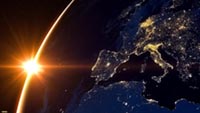86 12.5 Coastal Land Resources and Dredging
Coastal lands are probably the most rapidly changing and economically significant part of the Earth’s physical environment. According to United Nations reporting, presently about 40 percent of the world’s population lives within 60 miles (100 kilometers) from a coast. The population density and development within the first mile of a coastline is typically both the most densely populated and also the highest value in terms of real estate value (Figure 12.5.1). However, this desire from humans to live along coastlines also comes at a great price to long-term sustainability of natural resources associated with coastlines. In many regions, features such as mangrove forests and wetlands are disappearing as development progresses. The predicted problems associated with sea-level and climate change rise will progressively cause catastrophic impacts. In 2017, the United Nations released a report that natural disasters are the greatest threat to humanity, and most of those disasters are associated with superstorms impacting coastal regions.

Figure 12.5.1. A night sky view of Europe showing city lights highlights the fact that the world’s coastlines are among the most densely populated regions of the planet.
Coastal Dredging
Dredging of sediments filling in submarine shipping channels and harbors re-releases environmental toxins that have already accumulated in nearshore marine sediments. Dredging also releases fine sediments rich in organic matter that contribute to anoxia and other detrimental benthic environmental impacts in the vicinity. The material that settles in harbors, shipping channels, and inland waterways are in constant motion during dredging operations, and wildlife habitats that might be able to tolerate a few days of high turbidity are endangered by the unending release of fine-grained sediments released by a long-term dredging operation.
From Miracosta College, is shared under a not declared license and was authored, remixed, and/or curated by LibreTexts. Download this book for free at https://geo.libretexts.org/Bookshelves/Oceanography/Oceanography_101_(Miracosta)

